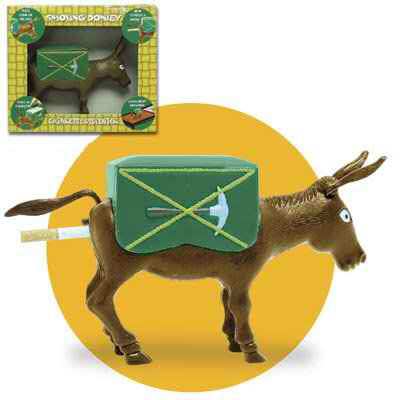The Materials Economy (or What Ever Happened to my Barbie Dream House?)
Wednesday, January 28, 2009
This is a post for those of you who eat, who occasionally expend capital, and who spend a couple days a week in the physical world. I imagine that's most of you.

I'd like you to take a moment and consider all the stuff you've owned in your lifetime. All the Christmas presents you've loved and lost, late night burrito wrappers you cast aside, those childhood toys you grew out of, that donkey cigarette dispenser you didn't really need, the quesadilla maker you never did learn how to use but got on sale for $9.99. From whence did they come? Thither did they go?
Over 4 million have watched as Annie Leonard explains the wacky system we call "the materials economy," or where all our stuff comes from and where it goes when we're done with it. Her 20 minute web-documentary, "The Story of Stuff," looks at our current linear system of extraction, production, distribution, consumption, and disposal, and offers us some environmentally friendly alternatives. I watched it and thought it provided a very eye-opening 20 minutes and represented a solid backbone on which to assemble an understanding of the materials economy. Here's a brief sampling of facts covered by Leonard:
- We're running a linear system of production on a finite planet; the system is, hence, unsustainable.
- America accounts for 5% of the world's population, but uses 30% of its resources and creates 30% of its waste.
- 80% of the worlds original forests are gone.
- Human breast milk is the food at the top of the food chain with the highest levels of many toxic chemicals.
- Only 1% of materials that flow through the materials economy in North America are still in use 6 months later! 99% are trashed!
(A slightly cleaner version is available at www.thestoryofstuff.com, but alas, I cannot embed it, so you'll have to head over there if you want an optimal viewing experience.)
Of course, a documentary covering such a vast amount of information in 20 minutes is bound to present some points of contention. Andy Brain of www.andybrain.com made a post that I think has some fair criticisms of Leonard and I would recommend reading both his text and the comments that ensued for a fuller understanding of some of t
 he ideas being discussed.
he ideas being discussed.All in all, a good, if incomplete, introduction to what's your stuff's been up to and what it gets up to before and after your time with it.
posted by Ashley Girty @ 4:58 PM,
![]()
1 Comments:
- At January 31, 2009 at 9:58 AM, Nicole Bardawill said...
-
Absolutely, so glad that you've highlighted this.
"Given the planet's current population of 6.5 billion people, there are only 1.8 productive hectares per person available globally". - David Suzuki
The average ecological footprint in the U.S. is 9.6 hectares and 7.6 in Canada, making North America the largest eco-footprint continent in the world. WTF



Post a Comment